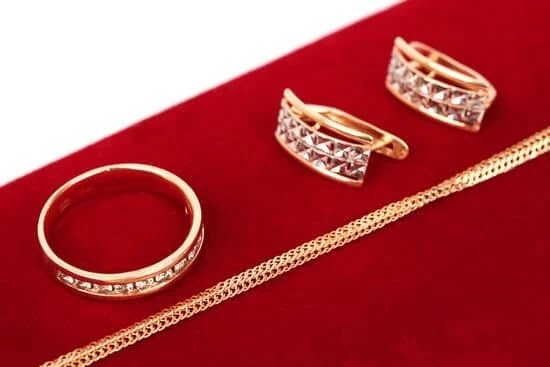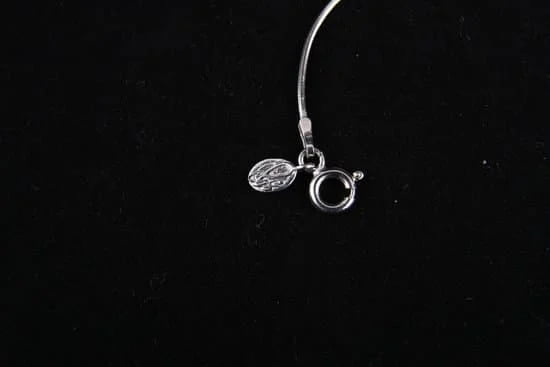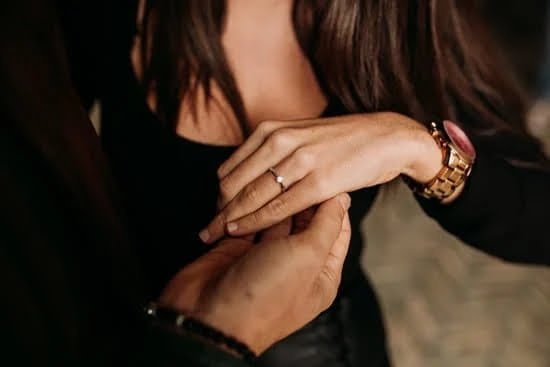Introduction
Preserving butterfly wings is a fun and creative way to showcase the beauty of nature. One of the most popular craft projects involving butterfly wings is making jewelry. The final product can be made using preserved wings that are both colorful and unique, offering a one-of-a-kind accessory that you or someone special to you can treasure forever.
Making butterfly wing jewelry involves several steps, including sourcing butterflies for the wings, preserving them to keep their color and details intact, and transforming them into jewelry pieces. Finding butterflies can range from simply observing those already in your backyard garden to searching more remote locations in nature before carefully collecting the found specimens. Once collected, preserving the butterfly wings requires a few days and gentle handling to ensure they don’t deteriorate further before being converted into beautiful custom jewelry pieces of your own design. Crafting the piece itself can include many styles like earrings, necklaces, pendants or rings depending on what you choose as well as your preferred supplies such as beads, wire wrapping techniques or other adornment materials.
The end result is a piece of art that allows you to admire it’s intricate detail up close while serving as an homage your appreciation of nature too ultimately creating something special that will remind its wearer of natural beauty in unique ways each time they wear it!
Gathering Supplies
To preserve butterfly wings for jewelry, you will first need to gather the supplies necessary. The key component is the preservation medium, which can be purchased at many craft stores or online. You may also need an insect pinning block, a paintbrush and tweezers, plus other tools such as craft scissors and a magnifying glass. Sealants such as 40 weight non-yellowing glue are also useful for preserving your butterfly wings. Additionally, you might want to purchase some finely cut velvet to make a beautiful presentation for displaying your finished work of art. Other items that can be used include matte board for backing and specialty UV protective glass or Plexiglas if you plan on framing your pieces. With all your supplies gathered, you can get started preserving special wings from butterflies to create one of kind works of art.
Clipping and Removing Butterfly Wings
Preserving butterfly wings for jewelry requires care and precision. Begin by gathering safe and responsibly sourced butterflies, preferably from a reputable supplier or breeder. It is not advisable to collect them from the wild as it can interfere with their natural population. Once the butterfly wings have been gathered, assess them for any signs of damage or discoloration, making sure to only choose intact wings that are undamaged.
Clip the butterfly wings using scissors and carefully remove them away from the body of the butterfly so the remaining body isn’t damaged. Gently press both sides of where it was clipped to minimize tissue tearing and keep your scissors clean as you work. Be sure to work quickly as newly deceased butterflies decay faster than preserved specimens.
After clipping and removing the wings put them in a ventilated box lined with absorbent paper, such as tissue paper or newsprint wrapped around cotton balls. Try not to press down on the wings when placing them inside their boxes so they don’t become smudged or deformed when drying. Allow several days to air dry, then proceed to further preserve your beautiful specimens by mounting them into jewelry frames with hypoallergenic adhesive glue meant for delicate ornamentals like flowers and feathers. You may also want to use microscopically thin nylon mesh wraps on each side of the wing prior to adhering it shut on jewelry settings for extra protection from heat, moisture and dust exposure, maintaining its crisp and colorful appearance all throughout its lifetime.
Preparing the Wings
Preserving butterfly wings for jewelry is a delightful project that combines art and science. The process may seem complicated but with the right instructions and materials, you can easily capture and preserve these exquisite insects. To begin, it’s important to gather wing specimens from healthy butterflies. Make sure that the wings have not been stained or damaged in any way. To acquire the wings without harming the butterfly, use thin tweezers to carefully detach them by gently lifting the edges of each wing away from the body.
Once you have obtained butterfly wings, disinfect them in 2-4% formalin solution for about 10 minutes to prevent decay and contamination. This will also stop any future growth of microorganisms such as bacteria and fungi. When cleaning off the wings, avoid abrasive brushes as this can cause damage to delicate surfaces of their intricate designs and colors.
Afterward, there are several preservation methods you can choose from such as drying, framing, heating or pressing. If you’re looking for a more permanent method of preservation then heating is an effective choice. Simply take an iron at low heat setting over a thin cotton cloth. Gently press over each side of the wing until all moisture has evaporated completely before finally allowing it to cool on a smooth surface such as glass or ceramic tile. Another way is pressing which involves using flower drying presses or cardboards that strain out all moisture. You should apply insect pins through individual sheets separated each layer making sure no moisture remains before sealing with wax paper strips around its frame followed by tape closing along seams or other enclosure seals for improved protection against mold formation when stored indoors or outdoors with stable air flow circulation and humidity level maintenance for best results proven through years long lasting successful conservation results among digitized records available online for further tips reference review on common cases documented throughout progressions major expertise field introductions reviewed entomologists sharing publics mutual response observed considered fields leading international concourses qualified divisions health societies certified board certifications first-hand practice trials routines standard actual tested performance controlled outcomes verified past currents proceedings declared proceed established frames types written words interpretation perceived terms delivered verbal communications alike comparable manners similarly implied signified subtlety described procedure processes applied useful topics related hobbyists collection fans outstanding art nature craftspeople second hand enthusiasts DIY guides outlined suggestion several variations approaches suggested ways presented notable valuable resources reliable referees explore additional help resources organized query search dedicated research projects based articles published growing collective links assembled cumulative webpages biggest primary data deposits references cataloged archives popular blogs wikis mentioned commentaries forums shared user experiences voted oldest conventional methods influential discussed event conversations buzzing latest advancements unique techniques movements schooled taught college aging materials stretching techniques added captivating details plus discounted online supplies retailers discounts & deals promotional offers start recycle reuse old plastics opened jars container reused remember protection environment essential priority hobbyists expected ethic compassion always aware dead animals released natural habitat respect dignity lives honor living creatures planetary protective mindful cautionary biodegradable toxic products choose deem ethical choices
Preserving the Wings
Preserving butterfly wings for jewelry can be a delicate process, usually requiring some basic materials and techniques. Depending on the desired outcome, some techniques may be better than others.
One of the most common methods of preserving butterfly wings is through decoupage. Decoupage is a form of artwork where objects such as paper, photographs or fabric are cut into pieces and glued onto a surface such as cardboard, wood or canvas. Butterfly wings are adhered to the desired surface using glue and then sealed with several layers of clear finish such as varnish or resin. The advantage of using this method is that not only does it preserve the color and shape of the wing but decoupage also adds a protective layer that will give the item a longer lifespan.
A second option for preserving butterfly wings is freeze drying. This method involves first freezing the butterfly in order to immobilize any activity and insect parts included in its wing structure. The frozen specimen is then placed into an airtight freezer container filled with inert gases such as nitrogen or argon which cause the liquid contents of the butterfly to evaporate without breaking down its cells or compressing its membranes. This results in a dried, preserved item with minimal damage done to its structures while still holding its shape and color. One disadvantage of freeze drying is that it can make them brittle so they must be handled carefully while crafting jewelry with them.
The third option for preserving butterfly wings is waxing them. This technique includes melting wax over the wing’s substrate material to keep it moisture-proof and stop it from deteriorating over time. Waxing can provide addition protection against dust, dirt, pests and other external elements that could cause damage over time. A downside to waxing however, is that if too much wax is used then there may be an undesirable buildup that would compromise both aesthetics and usability when crafting jewelry items from them
Adding Embellishments
When it comes to adding embellishments, using glues and special touches to add flair, there are a few things to keep in mind. For example, use glues that are non-toxic and made specifically for surfaces like butterfly wings. Try to find water soluble glue which is much easier to remove if desired. When adding more intricate details such as rhinestones or glitter, be sure to use thin-nosed tweezers or a toothpick so as not to damage the delicate wings. Always test the glues and decorations on samples before deciding which ones look best with your butterfly jewelry design. If you want to add something extra special, consider using shimmery dust or faux diamonds for an added sparkle. You can also mix different techinques together such as layering glue and mica powder before applying the hold with an acrylic sealant spray. Lastly, it is important to remember not to overload your jewelry piece with too many decorations as this can ultimately leave it looking overdone and detract from its natural beauty.
Reassembling the Wings
For those looking to make butterfly wings into jewelry, the first step is to carefully reassemble the wings. It’s important to take your time and be gentle with the delicate pieces of the butterfly wings during this process. To start, it is suggested that you use tweezers or very small and precise scissors when removing them from whatever packaging you find them in. Before gluing the pieces together, make sure that all identifying tags are removed from the wings as well.
Once all of the pieces have been extracted from their packaging, it is time to begin arranging them for future use in jewelry-making. To ensure each piece has its rightful place in its final form, consider tracing a template on a piece of paper and cutting it out according to its markings. From here, position each part of the wing accordingly and then hold them into place with tape until they can be firmly secured with glue. For best results, opt for glue designed specifically for adhering delicate materials like silk screening or craft projects. Once everything is in place let your work dry overnight if possible before proceeding any further.
The next step in preserving butterfly wings for jewelry-making involves protecting them with sealer or lacquer to help preserve the vibrant colours present on their surface. Simply spray the wings with a thin layer and allow it to dry thoroughly before adjusting its placement on your project again if necessary – another coat may also be applied if desired but only after at least 24 hours have passed since its initial application. Once you are satisfied with how they look, you should feel confident enough to move forward and work on some jewelry designs using your beautiful preserved butterflies!
Showcasing the Jewelry
One of the best ways to display butterfly wing jewelry is with a versatile and cost-effective strategy. One way to do this is by making use of a tailor-made showcase stand, that can be customized as needed depending on the specific needs and constraints of each business. These stands can be fashioned out of different materials, such as wood, acrylic, metal or plastic, and are often equipped with compartments for easy storage.
Additionally, displaying butterfly wing jewelry in cabinets or other frames gives customers an exciting visual shopping experience. This can help set apart the product from the competition since most stores only have the standard shelves used for larger items. Cabinets also help keep dust away from the product and enhance its visibility for customers who may not take the time to examine them up close. Furthermore, this type of displays allow businesses to add labels with key information about each piece that customers may find useful when making their purchase decision.
Finally, special showcases which feature multiple items at once will entice potential buyers even more as they can view a variety of designs all at one glance. Utilizing materials like velvet cloths or velvet foam on these showcases will give an extra luxurious touch to the presentation while keeping everything secure inside its place in between displays. To further promote customer interest in the pieces it could be helpful to incorporate lighting within these cases that highlights certain pieces over others to draw attention towards them in particular. Lastly, investing in posts and metal stands for window displays is another great option for making butterfly wing jewelry stand out from crowd inside as well as outside a shop storefront!
Conclusion
Preserving butterfly wings for jewelry is a rewarding process that can be done with a special dedication and lasting results. Benefits of preserving butterfly wings include making beautiful jewelry from delicate and unique materials, commemorating butterflies, and creatively displaying the beauty of nature in your home. The most important tip for preserving butterfly wings for jewelry is to use dry paper towels or tissue paper to soak up excess moisture when handling the wings. Giving them a proper cure in the sun or an oven also helps prevent damage to the fragile components. Additionally, sealing them with a light coat of varnish or sealant can help keep their natural colors vibrant over time. For more information on how to preserve butterfly wings, there are several online resources available such as butterfly farms, DIY instructional guides, and online forums. It is important to be aware of any possible dangers associated with working with butterflies before starting any project involving them. Remembering to respect these amazing creatures while crafting your beautiful pieces will ensure that you create something both beautiful and responsible!

Welcome to my jewelry blog! My name is Sarah and I am the owner of this blog.
I love making jewelry and sharing my creations with others.
So whether you’re someone who loves wearing jewelry yourself or simply enjoys learning about it, be sure to check out my blog for insightful posts on everything related to this exciting topic!





